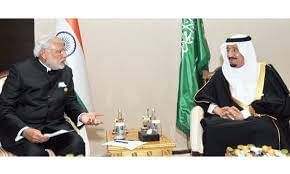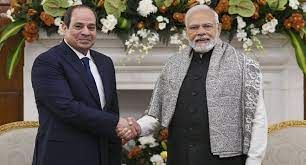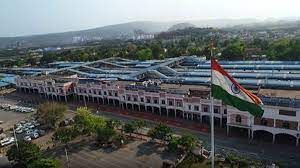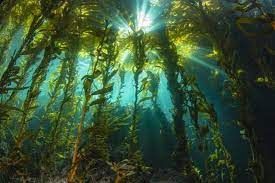UPSC Daily Current Affairs- 27th January 2023 | Current Affairs & Hindu Analysis: Daily, Weekly & Monthly PDF Download
GS-I
What are Etikoppaka toys?
Context
An Etikoppaka toy craftsman is one among the seven persons from Andhra Pradesh who have been selected for this year's Padma Awards.
About Etikoppaka toys:
- These are traditional toys made by artisans of Etikoppaka village located on the banks of Varaha River in Visakhapatnam district of Andhra Pradesh.
- These toys are made out of wood and are coloured with natural dyes derived from seeds, lacquer, bark, roots and leaves.
- The artisans mainly use the wood from trees known as 'ankudu' (Wrightia Tinctoria) that is soft in nature.
- These toys have no sharp edges. They are rounded on all sides.
- Etikoppaka toys received Geographical Indication (GI) tag IN 2017.
- Why are they called lacquer toys?
- While making the Etikoppaka toys, lac, a colourless resinous secretion of numerous insects, is used.
- The already prepared vegetable dyes are further mixed to the lac, during the process of oxidation.
- After this process, the end product obtained is rich and colored lacquer.
- The lac dye is used for decorating the Etikoppaka toys, which are exported all over the world.
- Thus, the toys are also called lacquer toys because of the application of lacquer coating.
What is the Geographical Indication (GI) tag?
- A geographical indication (GI) is a sign used on products that have a specific geographical origin and possess qualities or a reputation that are due to that origin.
- In order to function as a GI, a sign must identify a product as originating in a given place.
- Geographical Indications are covered as a component of intellectual property rights (IPRs) under the Paris Convention for the Protection of Industrial Property.
- At the International level, GI is governed by the World Trade Organisation’s (WTO’s) Agreement on Trade-Related Aspects of Intellectual Property Rights (TRIPS).
- In India, Geographical Indications registration is administered by the Geographical Indications of Goods (Registration and Protection) Act, 1999.
- The first product in India to be accorded with GI tag was Darjeeling tea in the year 2004-05.
Source: Indian Express
GS-II
India and Saudi Arabia: Strengthening the Bond
Context
Saudi Arabia and India ties have undergone a significant transformation in recent years. The camaraderie between the two nations is rooted in our cultural and civilisational ties. The Kingdom and India share mutual respect and appreciation which opens doors for our collaboration and partnership. These ties have been cemented by diplomatic visits made by leaders from both countries.
Recent visits by the leaders of India and Saudi Arabia
- Visit by Prince: The visit of His Royal Highness Prince Mohammed bin Salman bin Abdulaziz, Crown Prince and Deputy Prime Minister then, to New Delhi in February 2019
- PM Modis visit to Saudi: Prime Minister Narendra Modi’s visit to Riyadh in October of the same year are two watershed moments in our journey of strategic ties.
Outcome of such visits
- Number of MoU’s for multiple sectors: During these visits, both nations concluded a number of MoUs for multiple sectors including energy, civil aviation, security, defence production, regulation of medical products, strategic petroleum reserves, small and medium scale industries, and the training of diplomats in our respective academies.
- Strategic Partnership Council (SPC) and working group: These two high-level visits anchored the historic formation of Strategic Partnership Council (SPC) at the leadership level. The SPC also saw the formation of working groups in multiple sectors significant to both nations.
- Comprehensive review of agreements and new opportunities: Since 2019, the Kingdom of Saudi Arabia and India have taken a comprehensive review of the agreements and have explored opportunities to work together.
Energy security and Bilateral trade between the two
- Trade extended to other sectors apart from energy: While our ties stem from energy security, over the years they have percolated into many other sectors, including pharma, IT and telecommunications. The Kingdom alone accounts for 18 per cent of India’s crude oil import.
- India is the second largest trading partner: Saudi Arabia is also the fourth largest trading partner of India while India is the second largest trading partner of Saudi Arabia with our bilateral trade close to $43 billion.
- Conducive business environment in the Kingdom: A number of leading Indian companies have also set up a base in Saudi Arabia, signifying the conducive business environment in the Kingdom.
- Joint ventures signifies trust and strong relationship: There are close to 750 Indian companies registered as joint ventures or 100 per cent owned companies based in Saudi Arabia, further indicating the strong relationship and trust between the nations.
- Huge investment via Public Investment fund: Since the formation of our SPC, the Public Investment Fund (PIF) has made investments of about $2.8 billion in digital and retail sectors of India. Similarly, Indian investments in Saudi Arabia have also reached $2 billion which are distributed amongst different sectors.
- Shared vision of the two: Saudi Arabia’s Vision 2030 and its 13 vision realisation programmes are closely aligned with India’s flagship initiatives of Make in India, Start-up India, Smart Cities, Clean India, and Digital India. Both economies have seen robust growth in the last decade.
- Close cooperation in important fields: Both nations have now been working closely together in important fields to achieve mutual and strategic objectives. This was in part achieved by allocating funds to the Coalition for Epidemic Preparedness and Innovation (CEPI), The Global Alliance for Vaccines and Immunisations (GAVI), and other international and regional health organisations and programmes.
Saudi Arabia’s Vision 2030
- Economic and social reforms: Under the aegis of Vision 2030, Saudi Arabia aims to transform its economy and society. Saudi Arabia is undergoing path-breaking economic and social reforms. The Kingdom has been working towards fostering its growing investment sector that will stimulate the economy.
- Cultural investment: The Kingdom, as part of Vision 2030, has also been investing in its culture with events such as the Red Sea Film Festival, which is dedicated to celebrating excellence in cinema and fostering the resurgent creative energy of Saudi and Arab filmmakers.
- Investment for sustainable infrastructure: The launch of the Events Investment Fund (EIF) by HRH Crown Prince Mohammed bin Salman aims to develop a sustainable infrastructure for the culture, tourism, entertainment, and sports sectors across the Kingdom. The fund seeks to develop world-class sustainable infrastructure including indoor arenas, art galleries, theatres, conference centres, horse-racing tracks, auto racing tracks, and other facilities across the Kingdom.
Way ahead
- The opportunities presented under Vision 2030 can be leveraged by India to invest in the Kingdom.
- With India assuming the G20 presidency, it paves the way for the perfect opportunity to sustain meaningful dialogue around accelerated and inclusive growth while achieving Sustainable Development Goals as the global economy navigates through the post-Covid era.
Conclusion
Amidst current global circumstances, India continues to successfully manoeuvre itself towards greater economic progress, built on strong foundations of sustainability and a thriving local community a feat and vision that it shares with its close partner Saudi Arabia. As India celebrates its 74th Republic Day with a vision of progress and prosperity, strengthening collaboration between India and Saudi Arabia will drive both economies and promote peace and stability in the region and the world.
Source: The Hindu
India, Egypt declare ‘strategic partnership’
Context
President of the Arab Republic of Egypt, Abdel Fattah El-Sisi, is on a State Visit to India from 24-27 January 2023.
- President Sisi, who is on his second State Visit to India, was also the Chief Guest at India’s Republic Day 2023.
- During this visit, President Sisi and PM Modi held bilateral talks
India-Egypt Bilateral Relations
- India and Egypt, two of the world’s oldest civilizations, have enjoyed a history of close contact from ancient times.
- Ashoka’s edicts refer to his relations with Egypt under Ptolemy-II.
- Close friendship between President Nasser and PM Nehru led to a Friendship Treaty between the two countries in 1955.
Political Relations
- Both countries have cooperated closely in multilateral fora and were the founding members of Non-Aligned Movement.
- The year 2022 is of particular significance since it marks the 75th anniversary of diplomatic relation between India and Egypt.
- Egypt has been invited as a Guest Country during India’s Presidency of G-20.
Economic Relations
- Bilateral trade has expanded rapidly in 2021-22, amounting to 7.26 billion registering a 75% increase compared to FY 2020-21.
- India’s exports to Egypt during this period amounted to US$ 3.74 billion and Egypt’s exports to India reached US$ 3.52 billion.
- In FY 2021-22, the top Indian imports from Egypt were Mineral Oil/Petroleum, Fertilizers, Inorganic Chemicals and Cotton.
- Main items of export to Egypt from India were Buffalo Meat, Iron & Steel, Engineering Products, Light Vehicles and Cotton Yarn.
- India was the 6th most important trading partner for Egypt in FY2021-22.
- Around 50 Indian companies have invested in various sectors in Egypt with a combined investment exceeding US$ 3.15 billion.
- Egyptian investments in India are to the tune of US$ 37 million.
- Wheat export from India
- Russia-Ukraine conflict has threatened Egypt with a shortage for wheat, 80% of which is imported from Russia and Ukraine.
- In April 2022, Egypt announced inclusion of India in the list of accredited countries which can supply wheat to Egypt, thus ending a long pending Non-Tariff Barrier.
- India — which had put a ban on export of wheat — allowed export of 61,500 tonnes to Egypt.
Development cooperation
- The grants-in-aid projects include:
- Pan Africa Tele-medicine and Tele-education project in Alexandria University, Solar electrification project in Agaween village and Vocational Training Centre for textile technology in Shoubra, Cairo, which have been completed.
- Technical cooperation and assistance
- Since 2000, over 1300 Egyptian officials have benefited from ITEC (Indian Technical and Economic Cooperation) and other programs like ICCR (Indian Council for Cultural Relations) and IAFS (India Africa Forum Summit) scholarships.
Defence Relations
- Exercises
- The first ever IAF-EAF Joint Tactical Air Exercise, Dessert Warrior, was held in Egypt in October 2021.
- For the first time, Indian Air Force (IAF) participated in Tactical Leadership Programme of Egyptian Air Force (EAF) Weapons School in 2022.
- Cyclone Exercise between two countries held in Jan 2023 in India.
- Transits:
- Indian Navy Ships undertake port calls at Egyptian ports.
- Egypt regularly provides transit facilities to IAF and Indian Navy aircraft ferrying to/ from Russia, Europe and the USA.
Cultural relation
- The Maulana Azad Centre for Indian Culture (MACIC) has been promoting cultural cooperation between the two countries.
- The iconic Cairo Tower (which is the tallest tower in North Africa) was illuminated with Indian National Flag in the evening of 15th August 2021.
Indian Community
- At present, the Indian community in Egypt numbers at around 3200, most of whom are concentrated in Cairo.
- There are also a small number of families in Alexandria, Port Said and Ismailia.
- About 400 Indian students are studying in Egypt, mainly in Al Azhar University.
News Summary: Outcomes of the State visit of President of Egypt to India
- Relationship upgraded to Strategic Partnership
- Both sides decided to elevate the relationship to Strategic Partnership covering political, security, defence, energy and economic areas.
- 75 years of establishment of India-Egypt relationship
- Both sides exchanged the Commemorative Postal Stamps to mark 75 years of establishment of India-Egypt relationship.
- MoUs signed in areas of Cyber Security, IT, Culture, Cooperation in Youth Matters
- The issue of terrorism
- Both countries agreed that concerted action is necessary to end cross-border terrorism. And for this, they decided that together both the countries will continue to try to alert the international community.
- They condemned the use of terrorism as a foreign policy tool and called for zero tolerance towards terrorism.
- Bilateral trade
- Both sides have decided to take the bilateral trade to 12 billion dollars in the next five years.
- Proposal to create permanent channels
- Egyptian President requested PM Modi to create permanent channels to enhance digital connections between small and medium scale industries.
- This will help in improving life of common people.
Source: The Hindu
GS-III
China plus one (C+1) strategy and advantage for India
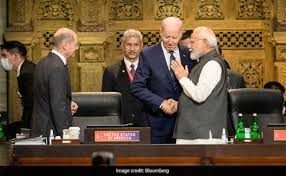
Context
In January 2023, India surpassed China to become the world’s most populous country with a population count of approximately 1.417 billion as against China’s 1.412 billion, as estimated by the World Population Review (WPR). This creates both opportunities and challenges for India.
The global turmoil and China as enablers of the Indian growth story
There are three factors that have enabled the Indian growth story.
- Overdependence on specific economies: If the pandemic had had one crucial lesson for the global economy, it must be reducing the overdependence on China-specific Global Value Chains (GVCs). As is evident from the pandemic, the subsequent Ukraine-Russia war or the recent disastrous COVID-19 surge in China the overdependence on specific economies is bound to have cascading effects on the world economy because of the macroeconomic shocks they produce.
- Glocalised models of economic partnerships: Countries now strive to strike the right balance between globalisation and localisation, through bilateral and multilateral platforms characterised by leveraging sub-regional comparative advantages. To a large extent, these emerging forms of glocalised models are also based on controlling Beijing’s political and economic prowess in the Indo-Pacific and beyond, where India plays an active role.
- Use of technology: There is no doubt that the pandemic has provided an uptick in the use of technology ranging from the provision of social security payments at the grassroots to government-level conferences.
How and why China plus one (C+1) strategy evolved?
- The US-China trade war and the pandemic-induced supply chain disruptions emanating from China have indeed paved the way for many western corporates to consider a China Plus One (C+1) strategy.
- The strategy would entail diversifying investments from China to other countries, to mitigate the economic and geopolitical risks associated with the former.
- While many also hail Vietnam as another economy to be in the race of attracting investments fleeing China, India could be the potential frontrunner in the C+1 game.
Why makes India to surge ahead in C+1?
- India’s economic advancement: India has a demographic advantage over China, with a larger percentage of its population under 30. This young population is expected to drive consumption, savings, and investments, leading to India’s goal of a multi-trillion dollar economy.
- Low cost of labour is an advantage: India has a low cost of labor and other forms of capital, making production costs lower and increasing competitiveness in international markets. India’s labor cost is also half that of Vietnam, making it a strong player in electronics and semiconductor manufacturing.
- India’s heavy infrastructure investment: A heavy investment in physical infrastructure through the National Infrastructure Pipeline (NIP) is expected to reduce costs in manufacturing sectors and cut transportation time and costs by 20%. This is in contrast to China, where multiple companies handle different parts of the transportation process, increasing costs
- India’s conducive business environment: Recent policy interventions in India such as the Production Linked Incentive (PLI) scheme, tax reforms, liberalization of FDI policies, setting up of land pools and organizing business summits have helped attract investments to the domestic economy. These efforts, driven by the Make in India initiative, have also been supported by efforts to promote competitive federalism and reduce transaction costs of doing business.
- India’s digital advantage: India’s high internet penetration at 43% allows for digital skilling initiatives to bring returns across various economic sectors, particularly services. A combination of home-grown technologies and greater access to Google and Facebook, which are banned in China, gives Indian youth a digital edge.
- As English is the second language provides ease of communication: the prevalence of the English language skill set in the young Indian populace undoubtedly puts India ahead of China. As English is the second official language in the Indian states, it provides business executives with ease of communication in conducting business with North American and European clients.
- Well balanced economic partnerships: India’s economic partnerships are characterized by utilizing sub-regional comparative advantages and controlling Beijing’s political and economic power in the Indo-Pacific. India’s decision to not join the RCEP in 2020 to protect its domestic market and curb trade deficits sends a strong signal of its disassociation with Beijing in trade partnerships. The CEPA signed with the UAE in 2022 is expected to increase two-way trade to $100 billion in five years by opening access for Indian exporters to Arab and African markets.
- Dynamic Indian diplomacy: India has strengthened its economy through diplomatic partnerships and trade agreements, such as the QUAD, I2U2, and agreements with Australia, Canada, the European Union, and African countries. These partnerships have provided Indian businesses with greater access to finance, technology, and new markets. As India assumes the presidency of the G20 and the Shanghai Cooperation Organization this year, it is well-positioned to navigate changing globalisation trends and be a strong voice for the Global South.
- Most important is the large domestic market: India’s large domestic market with a population of 1.3 billion and increasing incomes at 6.9 percent per annum offers a competitive alternative to China’s massive domestic market. With a population base of 98 million, Vietnam’s market is much smaller in comparison.
Conclusion
Indian economy that has risen from the ashes like a phoenix after a year of negative growth caused by the pandemic-led lockdown. India’s 74th Republic Day, therefore, should not merely mark a remembrance of the past or a celebration of adoption of the world’s largest and most comprehensive constitution, but should also be a celebration of the dazzling future of a roaring economy that will show light to a dreary world.
Source: The Hindu
Sovereign Green Bonds Auctioned
Context
RBI auctioned maiden Sovereign Green Bonds (SGrBs) worth Rs 8,000 crore on January 25.
- This is part of the Rs 16,000 crore Sovereign Green Bond auction that the RBI will conduct in the current financial year.
- The second green bond auction will be conducted on February 9.
What are Green Bonds?
- These are bonds issued by any sovereign entity, inter-governmental groups or alliances and corporates.
- These bonds are launched with the aim that the proceeds of the bonds are utilised for projects classified as environmentally sustainable.
- Sovereign green bonds are issued by governments to raise resources for such projects.
- In India, the framework for the sovereign green bond was issued by the government on November 9, 2022.
Why are these bonds important?
- Over the last few years, Green Bonds have emerged as an important financial instrument to deal with the threats of climate change and related challenges.
- According to the International Finance Corporation (IFC) climate change poses risks for agriculture, food, and water supplies.
- Hence, it is critical to connect environmental projects with capital markets and investors and channel capital towards sustainable development.
- Green Bonds are a way to make that connection.
How beneficial are Green Bonds for investors?
- Green Bonds offer investors a platform to engage in good practices, influencing the business strategy of bond issuers.
- They provide a means to hedge against climate change risks while achieving at least similar, if not better, returns on their investment.
- In this way, the growth in Green Bonds and green finance also indirectly works to disincentivise high carbon-emitting projects.
India’s journey towards issuance of Sovereign Green Bond
- The Union Budget 2022-23 made an announcement to issue Sovereign Green Bonds.
- In November 2022, Finance Ministry approved the final Sovereign Green Bonds framework of India.
- As per the provisions of the framework, Green Finance Working Committee (GFWC) was constituted to validate key decisions on issuance of Sovereign Green Bonds.
How will be bonds’ proceeds be used?
- The proceeds from the green bonds issuance will be deposited in the Consolidated Fund of India (CFI), and then funds from the CFI will be made available for the eligible green projects.
- The government said the bonds’ proceeds will be used for green projects that:
- Encourage energy efficiency;
- Reduce carbon emissions and greenhouse gases;
- Promote climate resilience and/or adaptation;
- Improve natural ecosystems and biodiversity, especially in accordance with the principles of SDGs
- The framework listed investments in solar, wind, biomass, hydro energy projects, urban mass transportation projects (e.g. metro rail), green buildings, pollution prevention and control projects.
- The government excluded projects such as fossil fuels, nuclear power generation, and direct waste incineration.
News Summary
- The maiden SGrB auction of Rs 8,000 crore, held on January 25, got oversubscribed owing to robust demand from various market participants, primarily banks.
- A sovereign bond is a specific debt instrument issued by the government.
- Just like other bonds, these also promise to pay the buyer a certain amount of interest for a stipulated number of years and repay the face value on maturity.
- These bonds are a source of government financing alongside tax revenue.
- The 5-year and 10-year green bonds were issued at a premium compared to the similar existing maturity sovereign regular bonds.
- Green premium, or greenium refers to the negative difference in spreads between green and non-green bonds with the same financial characteristics (currency, tenor issued by the same issuer. The green premium suggests that green bonds have a pricing advantage to the issuer over conventional bonds.
Source: The Hindu
Green Railway Station Certification
Context
Recently, the Visakhapatnam railway station of East Coast Railway has been awarded the ‘Green Railway Station Certification with the highest rating of Platinum' by the Indian Green Building Council (IGBC).
About Green Railway Station Certification:
- It is a rating system developed by the Confederation of Indian Industry and Indian Green Building Council with the support of the Environment Directorate of Indian Railway
- It is a voluntary and consensus-based programme.
- This is the first of its kind holistic rating in India to address environmental sustainability in Indian railway stations.
Key facts about Indian Green Building Council (IGBC)
- It is part of the Confederation of Indian Industry (CII) formed in the year 2001.
- The council offers a wide array of services which include developing new green building rating programmes, certification services and green building training programmes.
- The council also organises Green Building Congress, its annual flagship event on green buildings.
- The council is committee-based, member-driven and consensus-focused. All the stakeholders, corporate, Government, academia and nodal agencies participate in the council activities through local chapters.
- The council also closely works with several State Governments, Central Government, World Green Building Council, and bilateral multi-lateral agencies in promoting green building concepts in the country.
Source: PIB
What are Kelp forests?
Context
A recent study published in the journal Nature revealed that Kelp forests are declining because of climate change.
About Kelp forests:
- Kelp thrives in cold, nutrient-rich waters.
- They attach to the seafloor and eventually grow to the water’s surface and rely on sunlight to generate food and energy, kelp forests are always coastal and require shallow, relatively clear water.
- They provide underwater habitats to hundreds of species of invertebrates, fishes, and other algae and have great ecological and economic value.
Distribution of Kelp forest
- Kelp forests have been observed throughout the Arctic by the Inuit. The Canadian Arctic alone represents 10 per cent of the world’s coastlines.
- They have adapted to severe conditions. These cool water species have special strategies to survive freezing temperatures and long periods of darkness and even grow under sea ice.
- In regions with cold, nutrient-rich water, they can attain some of the highest rates of primary production of any natural ecosystem on Earth.
- Between Ellesmere Island and Labrador, as well as along the coasts of Lancaster Sound, Ungava Bay, Hudson Bay, Baffin Bay, and Resolute Bay in Hudson Bay and eastern Canada, kelp forests have been scientifically documented.
Source: The Hindu
|
38 videos|5288 docs|1117 tests
|
FAQs on UPSC Daily Current Affairs- 27th January 2023 - Current Affairs & Hindu Analysis: Daily, Weekly & Monthly
| 1. What are the three papers in the UPSC exam? |  |
| 2. What is the significance of GS-I in the UPSC exam? |  |
| 3. What topics are covered in GS-II of the UPSC exam? |  |
| 4. What does GS-III of the UPSC exam focus on? |  |
| 5. How can I prepare for the GS-I, GS-II, and GS-III papers of the UPSC exam? |  |


